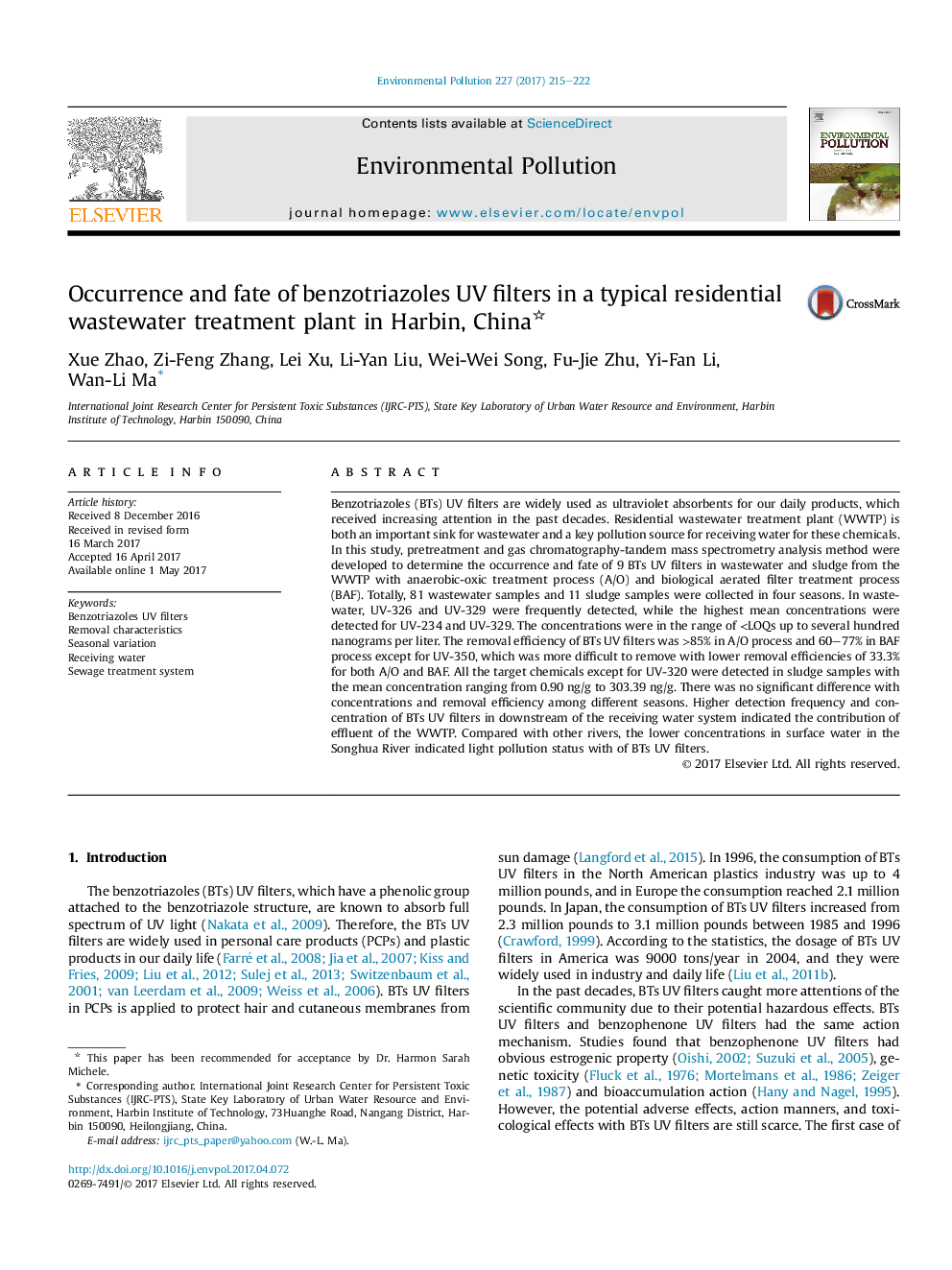| کد مقاله | کد نشریه | سال انتشار | مقاله انگلیسی | نسخه تمام متن |
|---|---|---|---|---|
| 5749141 | 1619146 | 2017 | 8 صفحه PDF | دانلود رایگان |

- UV-234 and UV-329 were the predominated compounds in residential wastewater.
- The A/O treatment process had higher removal effect than the BAF treatment process.
- Removal efficiency of UV filters was not significantly influenced by season changes.
- Effluent from the WWTP was not the only pollution source for the Songhua River.
Benzotriazoles (BTs) UV filters are widely used as ultraviolet absorbents for our daily products, which received increasing attention in the past decades. Residential wastewater treatment plant (WWTP) is both an important sink for wastewater and a key pollution source for receiving water for these chemicals. In this study, pretreatment and gas chromatography-tandem mass spectrometry analysis method were developed to determine the occurrence and fate of 9 BTs UV filters in wastewater and sludge from the WWTP with anaerobic-oxic treatment process (A/O) and biological aerated filter treatment process (BAF). Totally, 81 wastewater samples and 11 sludge samples were collected in four seasons. In wastewater, UV-326 and UV-329 were frequently detected, while the highest mean concentrations were detected for UV-234 and UV-329. The concentrations were in the range of
236
Journal: Environmental Pollution - Volume 227, August 2017, Pages 215-222